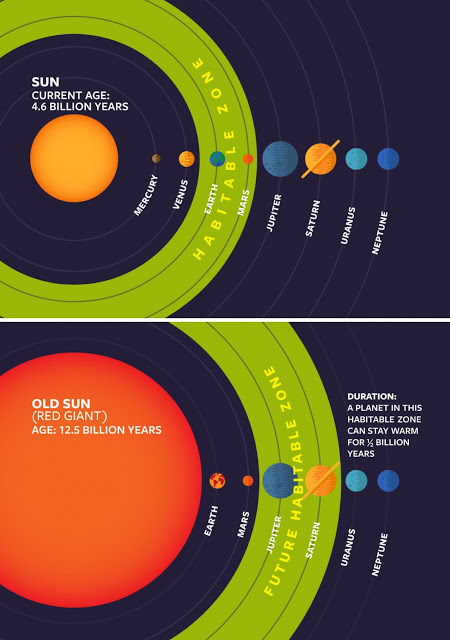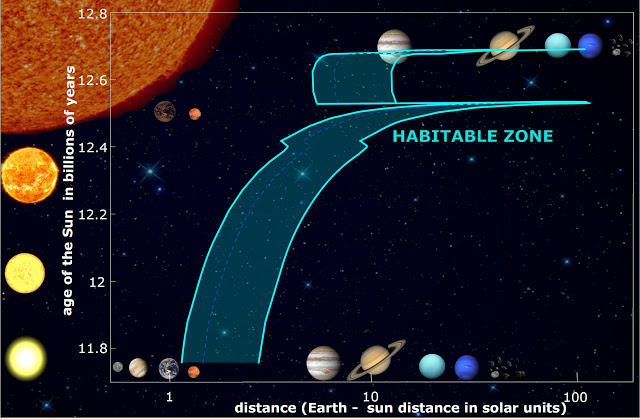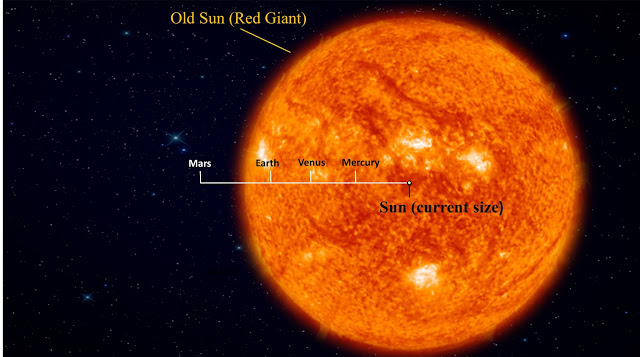

| Online: | |
| Visits: | |
| Stories: |

| Story Views | |
| Now: | |
| Last Hour: | |
| Last 24 Hours: | |
| Total: | |
Hunting for Hidden Life on Worlds Orbiting Old, Red Stars
All throughout the universe, there are stars in varying phases and ages. The oldest detected Kepler planets (exoplanets found using NASA’s Kepler telescope) are about 11 billion years old, and the planetary diversity suggests that around other stars, such initially frozen worlds could be the size of Earth and could even provide habitable conditions once the star becomes older. Astronomers usually looked at middle-aged stars like our sun, but to find habitable worlds, one needs to look around stars of all ages.
The “habitable zone” is the region around a star in which water on a planet’s surface is liquid and signs of life can be remotely detected by telescopes.
“When a star ages and brightens, the habitable zone moves outward and you’re basically giving a second wind to a planetary system,” said Ramirez. “Currently objects in these outer regions are frozen in our own solar system, and Europa and Enceladus – moons orbiting Jupiter and Saturn – are icy for now.”
Dependent upon the mass (weight) of the original star, planets and their moons loiter in this red giant habitable zone up to 9 billion years. Earth, for example, has been in our sun’s habitable zone so far for about 4.5 billion years, and it has teemed with changing iterations of life. However, in a few billion years our sun will become a red giant, engulfing Mercury and Venus, turning Earth and Mars into sizzling rocky planets, and warming distant worlds like Jupiter, Saturn and Neptune – and their moons – in a newly established red giant habitable zone.
Credit: Cornell University
“For stars that are like our sun, but older, such thawed planets could stay warm up to half a billion years in the red giant habitable zone. That’s no small amount of time,” said Ramirez, who is the lead author of the study.
Credit: Ramses Ramirez
“In the far future, such worlds could become habitable around small red suns for billions of years, maybe even starting life, just like Earth. That makes me very optimistic for the chances for life in the long run,” said Kaltenegger.
Source:





